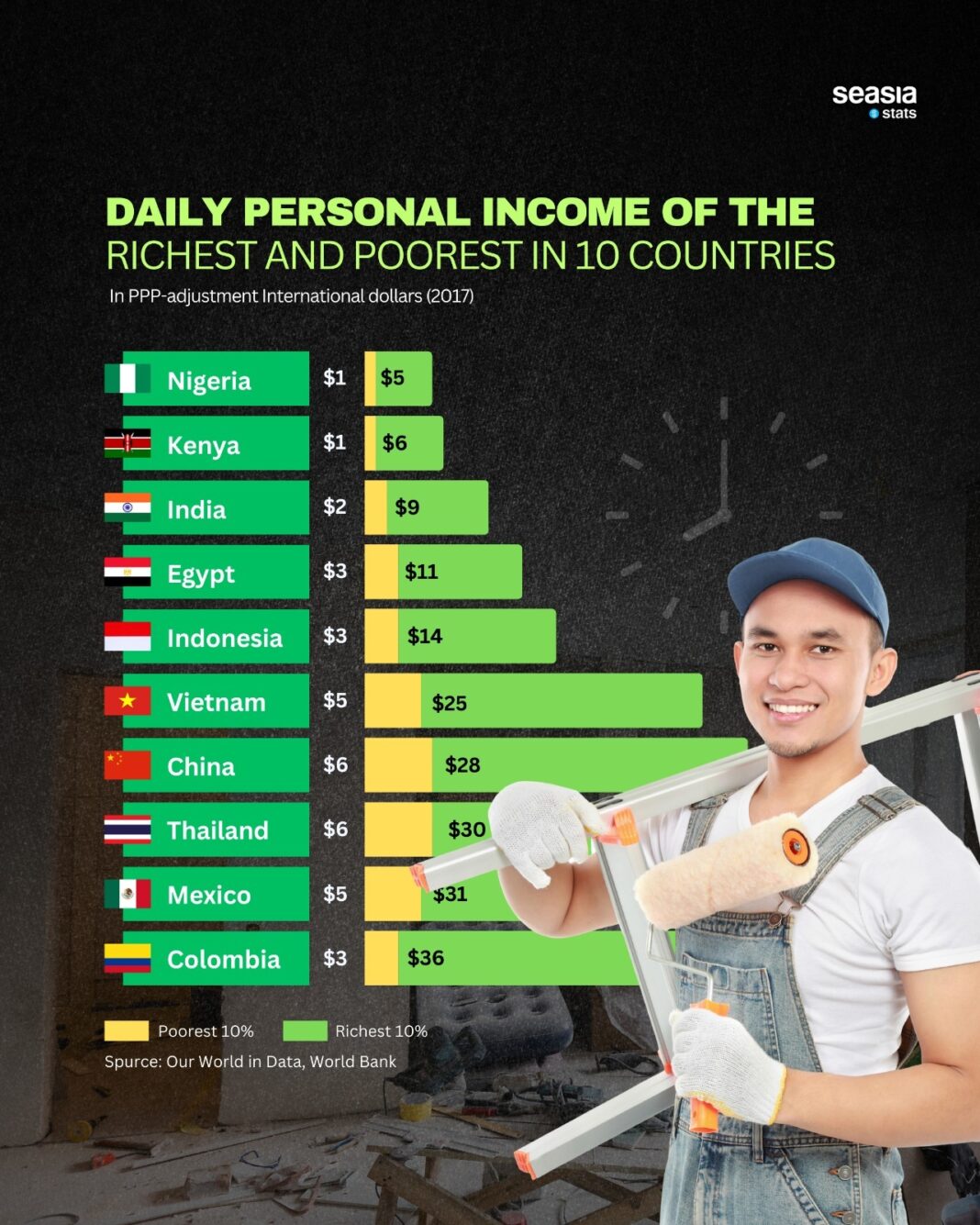- Nigeria and Kenya report the lowest daily incomes for the poorest: just $1 a day.
- China’s poorest earn $6 daily, while the richest earn $28—among the narrowest gaps.
- Thailand, Mexico, and Colombia have the highest top-tier daily earnings, ranging from $30 to $36.
- The richest 10% in Vietnam earn five times more than the poorest 10%.
- Despite economic growth, many countries struggle with deeply rooted income inequality.
What does daily income look like for the top and bottom rungs of society? A recently published visualization by Seasia Stats shows the daily personal income of the richest and poorest 10% across 10 countries, adjusted for purchasing power parity (PPP) in 2017. The differences are stark—and in some cases, staggering.
Lowest-Income Countries: Surviving on a Dollar
In Nigeria and Kenya, individuals in the poorest 10% live on just $1 per day. These figures reflect extreme poverty, where even the most basic needs—like food, water, and housing—are hard to meet. Meanwhile, the wealthiest 10% in these countries earn $5 and $6 daily, respectively. Though modest by international standards, this still represents a five- to six-fold gap within the same national economy.
Modest Progress: India and Egypt
India’s poorest 10% earn $2 per day, while the richest reach $9. Egypt shows a similar gap, with the bottom 10% at $3 and the top tier at $11. These nations demonstrate slightly better conditions for the bottom segment than sub-Saharan counterparts, but the earnings gap remains wide—roughly 4x in both cases.
Middle-Income Economies: Uneven Gains
Indonesia’s economic trajectory has shown promise, with the top 10% earning $14 per day. However, the bottom segment still earns only $3, highlighting limited trickle-down effects of growth. Vietnam offers a slightly better distribution: the poorest earn $5 daily, while the richest take home $25—a 5x gap, but with a stronger lower-income baseline.
China: A More Balanced Spread
Among the 10 countries, China exhibits one of the narrowest gaps between the richest and poorest. The lowest 10% earn $6 daily, and the top 10% earn $28. While the gap remains wide in absolute terms, the baseline income for the poorest is among the highest in the sample—suggesting more inclusive economic development policies over recent years.
Latin America’s High Earners, Deep Divides
Mexico and Colombia top the chart when it comes to high-income earners. The richest 10% in both countries earn $31 and $36 respectively per day. Yet, the poorest in these nations earn just $5 in Mexico and $3 in Colombia, representing the highest income disparity across all 10 countries in the report.
Rethinking What Economic Growth Means
When countries tout economic growth, they often refer to GDP per capita or national output. But the reality shown in this dataset is that the benefits of growth are not being shared equitably. Many people still live in or near poverty, while a small fraction enjoys relative comfort. Addressing these gaps is not just an economic issue—it’s a moral and policy imperative for nations seeking inclusive development.
(This article is independently written using publicly available 2017 PPP-adjusted data visualized by Seasia Stats. Original sources: World Bank and Our World in Data.)
A global media for the latest news, entertainment, music fashion, and more.















